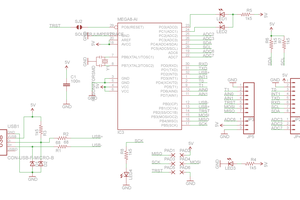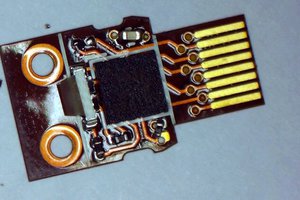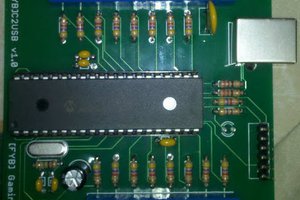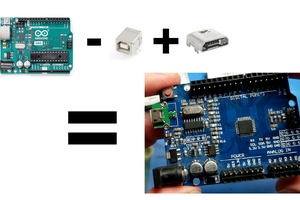This is a mouse that I would love to use well into the future, but I don't want that future to include micro-USB.
I took apart the mouse to see what I could do to replace the dated port and found that the space was too limited to just slap a different port on. I also wanted to make this project easily reproduceable so that anyone can give it a shot.
With those things in mind, I decided to reverse engineer the weirdly shaped power and switch PCB so that I could recreate the shape and circuitry with the goal of replacing the micro-USB with C.
To capture the shape of the PCB I scanned the board with my scanner/printer and uploaded it into Fusion 360. In Fusion I was able to sketch the outline, holes and squares almost perfectly. I made the holes a bit bigger than what I measured just to give me some wiggle room. With the sketch complete I exported it as a DXF file and uploaded it into eagle as an outline and just like that I had easily recreated the weird shape.
To recreate the circuit, I just beeped out the components and traces with a multimeter while writing it down in a notebook which then was later (crudely) refined into eagle as a schematic. I could've scanned the traces the same way I scanned the PCB but I thought reading the board was quicker and honestly just a bit more fun. I also measured and identified the components so that I could compile a BOM. This would make it possible to order the PCB fully assembled.
With a schematic and board shape I now have cloned PCB and with the addition of two resistors and a USB C port I now have a USB C replacement board!
The only thing left to do was transfer over all the components from the original PCB, add the two resistors and USB port and then install it. Since the port is bigger, I had to enlarge the original USB cutout with a Dremel.
It's worth noting that the PCB shown in the blog doesn't have the ESD traces the original PCB had. At the time of the first PCB I didn't include them but added them once it proved to work. So, the PCB that can be found on PCBWay comes with those traces. You can also find the part numbers for all the components in the BOM on PCBWay.
 Solderking
Solderking
 bany.yusuf.nby
bany.yusuf.nby
 Sam Ettinger
Sam Ettinger

 sjm4306
sjm4306